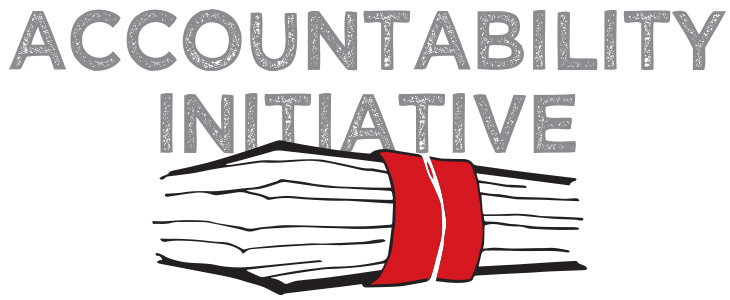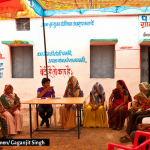
Highlights from the CAG Performance Audit of MGNREGA
31 May 2013
Launched in 2005-06, the Mahatma Gandhi National Rural Employment Guarantee Act is Government of India’s most expensive flagship scheme costing Rs. 192322.33 crores since its launch[1].However, despite 7 years of operation, the latest performance audit by the Comptroller and Auditor General (CAG)[2] – points to the same implementation inefficiencies consistent with most social sector programmes[3].
Some of the findings of the CAG are highlighted below:
Inefficient Planning
According to the MGNREGA guidelines, the responsibility for the implementation of the scheme and the primary unit of planning is the Gram Panchayat (GP). Annual plans made by the GP, are consolidated first at the block and then at the district level to prepare the district plan/labour budgets. These labour budgets are an important basis for estimating employment to be generated and also form the basis of fund allocation to states/UTs. The CAG audit however found a number of inefficiencies with this planning process. These included:
- In 1201 GPs (31% of the sampled GPs) across 11 states, annual plans at the GP level were either not prepared or prepared in an incomplete manner. Interestingly, in 3 states, including Andhra Pradesh – none of the sampled GPs had made annual plans.
- District Labour budgets were not prepared in 49 districts (26% of sampled districts).
- Even when plans were made – they did not always have the requisite information. In 58 districts (31%) – the projected employment generation wasn’t included. Many plans also did not include the shelf of works or list of assets to be built.
- The CAG also noted significant delays at every level in the submission of the annual plans. Delays were highest at the GP level –difference between the target date of submission to the block and actual submission ranged from 1 month to as high as 21 months!
Shortfall and Delays in Execution of Works
The effectiveness of the planning has to be measured against the actual execution.
- The audit report observed large variations in some states between planned employment generations (as per the labour budget) and actual employment generated. ( See Table 1 for more details)
Table 1: Shortfall between actual employment generated and projections in the labour budget
|
S. No. |
State/UT |
Range of shortfall |
| 1. |
Bihar |
27% – 98% |
| 2. |
Gujarat |
2% – 62% |
| 3. |
Jharkhand |
40%-59% |
| 4. |
Madhya Pradesh |
27%-94% |
| 5. |
Maharashtra |
30%-100% |
| 6. |
Rajasthan |
13%-50% |
| 7. |
Tamil Nadu |
17%-59% |
Source: Table 5 of the report
- Moreover, in 14 states and 1 UT , 129.22 lakh works amounting to Rs. 126,961.11 crore were approved in the annual plans but only 38.65 lakh works ( 30% of planned works) amounting to Rs. 27,792.13 crore were completed during the audit period indicating significant inefficiencies in implementation of annual plans. In fact, in 25 sampled districts, across 9 states – 4,907 works amounting to Rs. 158.83 crores was executed outside the annual plans
Human Resource Shortfall and Capacity
The MGNREGA guidelines envisage Gram Rozgar Sahayaks (GRS) appointed at the village level to assist the GP in the implementation of the scheme. These GRS are responsible for maintaining all documents, overseeing the process of registration, distribution of job cards, allocation of works, payment of wages and ensuring monitoring of the scheme through social audits.
- The audit report found widespread shortages in GRS posts across 9 states ranging from 20% in Uttar Pradesh to as high as 93% in Punjab. In 4 states including Tamil Nadu and Kerala no dedicated GRS had been appointed.
- Further, funds for training personnel were highly underutilised in many states. In Uttar Pradesh for instance, 74% of funds for training in 2010-11 had not been utilised.
Delays, shortfall in release of funds
As with other schemes[4], the last few years has seen an increasing gap between allocations made for MGNREGA and the actual release of funds. (See table 2 for more details)
Table 2: Difference between Allocations (BE) and Actual Release of Funds
|
|
Allocation (Budget Estimates (BE)) |
Actual Release |
|
2007-08 |
12000 |
12661.22 |
|
2008-09 |
16000 |
30000.19 |
|
2009-10 |
39100 |
39539.38 |
|
2010-11 |
40100 |
35841.49 |
|
2011-12 |
40000 |
29215.05 |
Source: Chart 8 of the report
Funds for MGNREGA are to be released in two instalments by GOI. The first tranche is based on the percentage of persondays projected for the first six months of the year in the labour budget (not exceeding 50% of the total approved budget). The second instalment is released only after utilising 60% of the previous funds released and, submission of Utilization Certificates (UCs) of the previous years. The audit however observed instances of:-
- Release of an additional 10% of approved allocations by GOI in some states. Further, excess funds of Rs. 2374.86 crores were released to six states either due to wrong calculations or without taking into account balances available in these states. Further, in 2010-11, GOI released Rs. 6,733.25 crores to states without taking into account the unspent balances of Rs. 10,104.71 crores as on 31st March 2010. Similarly, in 2011-12, GOI released Rs. 2,440 crores to four states without taking into account unspent balances amounting to Rs. 3758.91 crores.
- Funds (amounting to Rs. 4072.99 crores) were also released by GOI for the next financial year in March of the previous year.
- With respect to state shares, the audit found instances of shortfall in release of state share amounting to Rs. 456.55 crores between 2007 and 2012. In a number of instances, delays in the release of state share ranged from only 3 days to as high as 354 days. (See annex 5E of the report for more details).
Specific problems related to wages and MGNREGA works
Below are some of the problems specific to the implementation of MGNREGA.
- Job cards were not issued to 12,455 households in six states. Photographs on 4.33 lakh job cards (an important identifier against fraud and misrepresentation) were missing in 7 states. Non-payment or under payment of wages of Rs. 36.97 crores was noticed in 14 states. In 55 GPs, payment was made in cash violating the guidelines which prescribes payment through banks or post offices. Other issues included, suspected misappropriation of wages through engagement of ghost works, incomplete or improperly filled “muster rolls” non-payment of unemployment allowance, delays in receipt of wages, amongst others
- While the guidelines prescribe that the material cost should not exceed 40% of the total work cost, in 12 states and 1 UT, the material cost was seen to be exceeding the prescribed level by Rs. 1,594.37 crores.
- Moreover, 1,02,100 inadmissible works amounting to Rs. 2,252,43 crores were undertaken. A significant number of works (amounting to Rs. 4070.76 crores) have also remained incomplete for a long time.
Record Keeping and Monitoring
- The audit found poor record maintenance at not just the GP level but also at the block and district levels. Deficiencies relating to both non-maintenance and/or incorrect maintenance of prescribed basic records were noticed in 18%-54% of all tested GPs.
- While rules require state governments to identify or establish independent social audit units to facilitate the process of conducting regular social audits – in 10 states and 4 UTs, these units had not been constituted. Moreover, in 11 states, significantly fewer social audits had been conducted than as prescribed by the norms.
- Further, monitoring at all levels (including central level) was found to be unsatisfactory.
Beneficiary Analysis
Finally, the audit report also analysed the correlation between rural poverty and the average number of households provided employment during 2009-10 till 2011-12. While at an aggregate level, the report found that there appears to be a correlation between poverty and employment given under MGNREGS, there were some notable exceptions. Bihar, Maharashtra and Uttar Pradesh which together accounted for 46% of the rural poor[5] utilised only 20% of GOI funds. In contrast, Andhra Pradesh, Chhattisgarh, Rajasthan, Tamil Nadu and West Bengal utilised more funds as compared to their poverty levels.
The report further sampled 38,376 beneficiaries across 27 states to assess their perception, awareness and experiences with the scheme. The main highlights from this survey are given below:-
- While at an all India level the total women beneficiaries is 33% (as per the norm), this ratio was less than 1/5th in Gujarat, Madhya Pradesh, Odisha, Uttar Pradesh, West Bengal, Jammu and Kashmir and Mizoram.
- On average about 72% of beneficiaries were aware of the number of days of employment to which they were entitled. Awareness levels were highest in some of the smaller states/UTs – Kerala, Meghalaya, Mizoram, Tripura and Pondicherry. In contrast, it was 28% in Gujarat, 43% in Odisha, 52% in Bihar and 57% in Maharashtra.
- Around 70% of respondents were aware of the timeliness within which wages are to be paid.
- Only half of the interviewed beneficiaries were aware of the prescribed quantum of work which entitled them to full wage payment. Similarly only around 56% were aware of the manner of wage calculations.
- A positive finding was that on average work was provided after 9 days of the job request (the guidelines say within 15 days of job application). However 99% of beneficiaries who were not provided work within 15 days were not paid the unemployment allowance.
- 78% of beneficiaries reported that muster rolls were maintained at the work site and attendance was marked on it.
- 65% reported that they received wages within 15 days, 16% within 1 month, 11 % between 1-2 months, 4% within 2-3 months and 2% reported delays of more than 2 months.
- A significant number of cash payments were reported in Tamil Nadu (98%), Arunachal Pradesh (73%) and Meghalaya (70%).
For more details please see:
http://saiindia.gov.in/english/home/Our_Products/Audit_Report/Government_Wise/union_audit/recent_reports/union_performance/2013/Civil/Report_6/Report_6.html
[1] The figure is the actual expenditure from 2006-07 till 31/12/2012. Calculated from: Ministry of Rural Development, MGNREGA, Report to the People, February 2013. Available online at: http://nrega.nic.in/netnrega/WriteReaddata/circulars/Report_to_the_people_English2013.pdf
[2] The audit covers the period from April 2007 to April 2013 and across 182 districts, 458 blocks and 3848 Gram Panchayats across 28 states and 4 Union Territories. The audit is available online at:http://saiindia.gov.in/english/home/Our_Products/Audit_Report/Government_Wise/union_audit/recent_reports/union_performance/2013/Civil/Report_6/Report_6.html
[3] For more details on performance of social sector schemes, please see Budget Briefs. Available at: http://www.accountabilityindia.in/expenditure_track
[4] For instance, in Sarva Shiksha Abhiyan, out of the total approved plans (GOI and state) of Rs. 61.722 crores, only 69% was released.
[5] Based on poverty estimates by the Planning Commission





